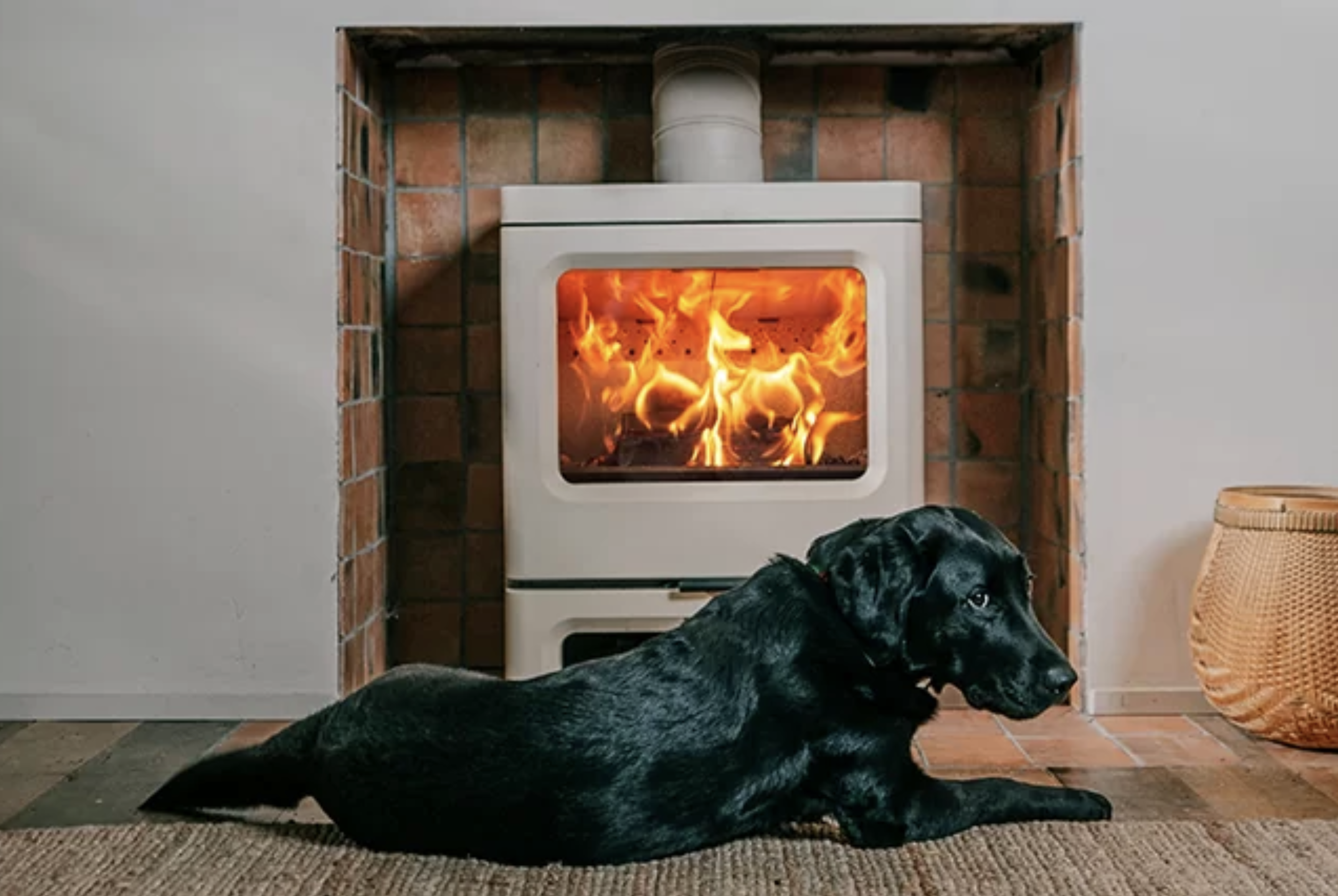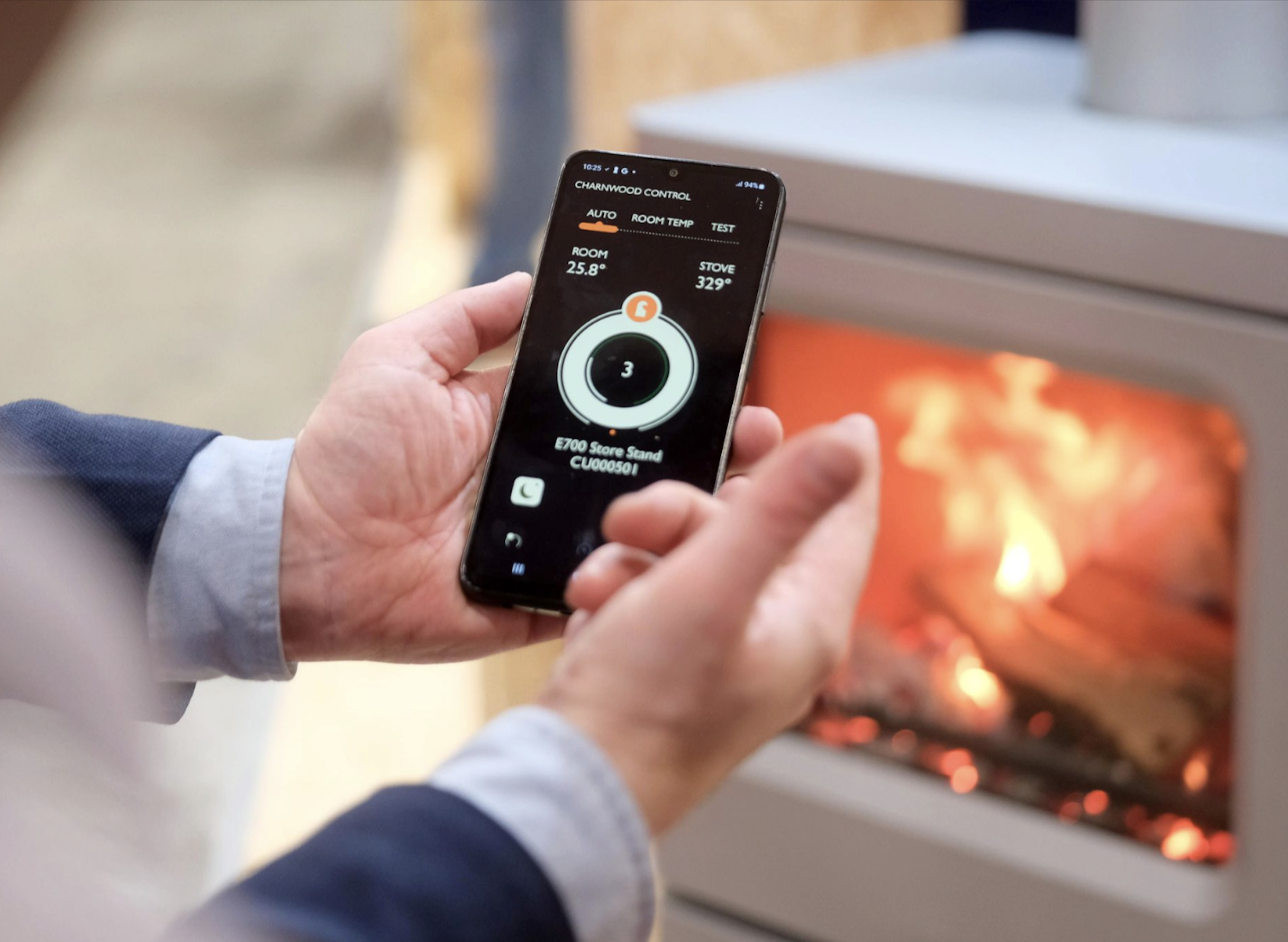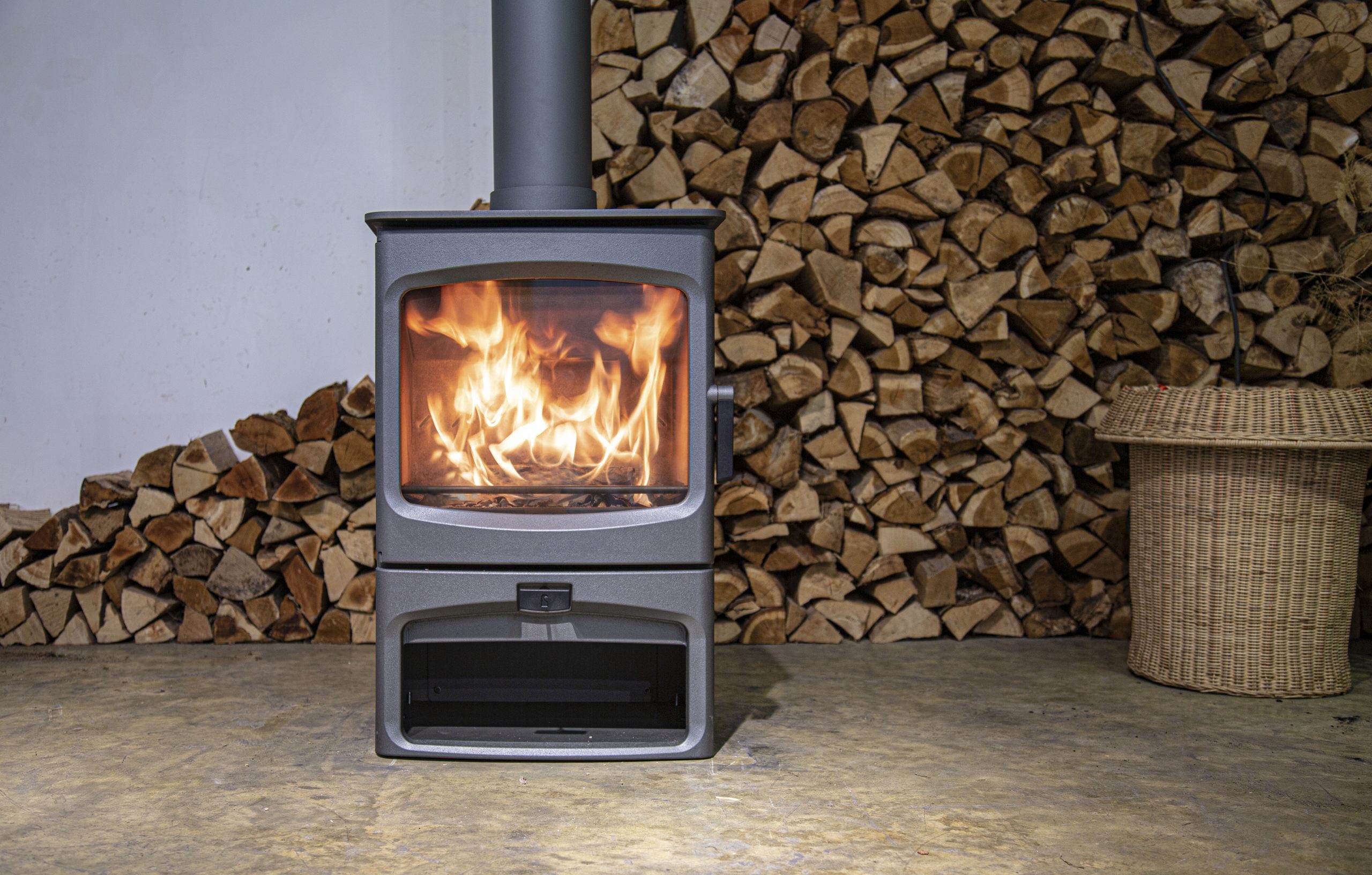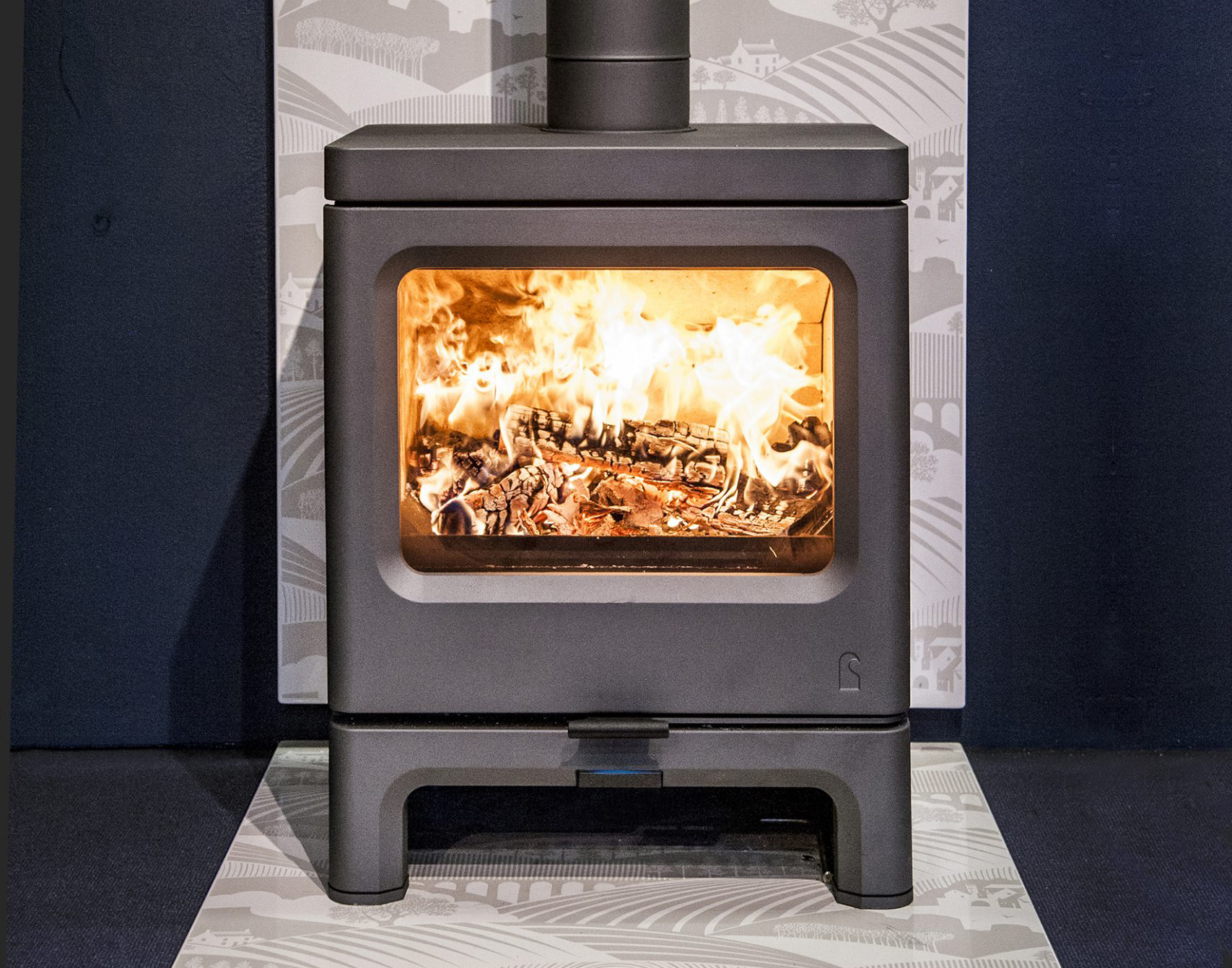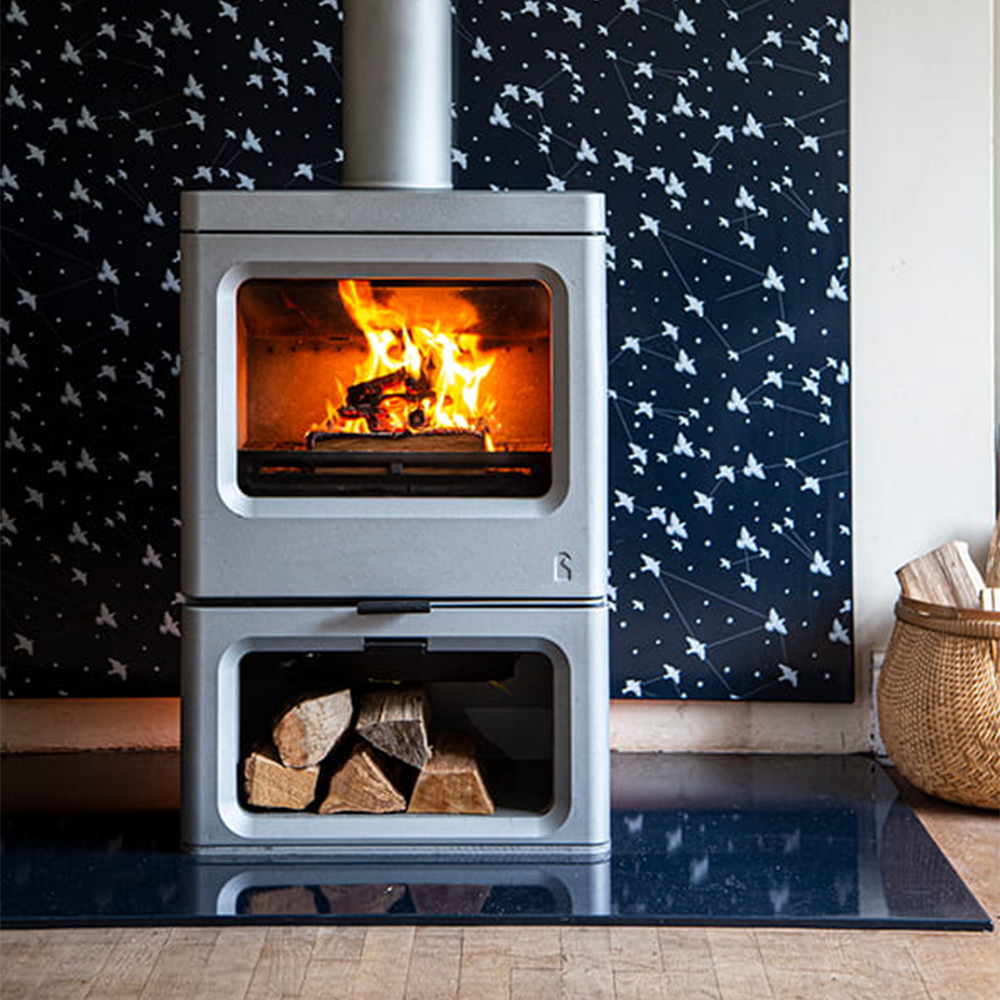We are excited to introduce the latest addition to our collection – the Cranmore Insert Stove which will be released in Autumn this year. Designed to seamlessly fit into an existing fireplace, the Cranmore Insert is a modern solution for those seeking to elevate the efficiency and elegance of their hearth and home.
Subtle elegance meets timeless design
The Cranmore Insert Stove is more than just a heating solution – it’s also something of a design statement. It offers a seamless, integrated look which effortlessly blends with your home’s existing architecture. The Cranmore Insert’s design draws inspiration from the Regency era, with its large single-framed glass door and archetypal detailing, making it a perfect fit for both traditional and contemporary settings.

Its large picture window showcases the mesmerising dance of the flames and creates a warm, inviting and cosy atmosphere. The Cranmore Insert is available in a range of colours, which can be customised to complement your existing décor, making it a versatile and sophisticated addition to your home.
Superior efficiency and ultra-low emissions
At Charnwood, we understand the importance of efficiency and environmental responsibility. The Cranmore Insert Stove, like all our stoves, is engineered for exceptional performance. Featuring Charnwood’s advanced clean burn Blu technology, this stove optimises fuel combustion to deliver impressive heat output while significantly reducing emissions. It has earned a clearSkies level 5 rating which means it outperforms Ecodesign standards. It is also DEFRA-exempt, meaning it meets the strictest efficiency and emissions targets for wood burning stoves and can be used in smoke control areas in urban towns and cities.
With the Cranmore Insert, you can enjoy the warmth and comfort of a wood-burning stove while knowing you are making a responsible choice for the environment.
Easy operation and maintenance
Simplicity and convenience are key aspects of the Cranmore Insert’s design. This stove is equipped with a single air control that allows for effortless operation, enabling you to achieve the perfect burn with minimal effort. Additionally, the Cranmore Insert features Charnwood’s renowned ash removal grate to make maintaining this stove an absolute breeze.
The ideal replacement for open fires
If you’re looking to upgrade from an open fire, the Cranmore Insert Stove is an ideal choice. Open fires, while undeniably having charm, are notoriously inefficient and they produce significantly more emissions both inside and outside the home. The Cranmore Insert offers a modern, efficient alternative that drastically reduces emissions and significantly improves heating efficiency – saving you money on your fuel bill! Replacing your open fire with a Cranmore Insert, means you’ll enjoy a warmer, more comfortable home while contributing to a cleaner environment.
All the benefits of wood-burning without the downsides!
_________
As we look ahead to Autumn 2024, we invite you to consider the Cranmore Insert Stove as your next home improvement investment. Whether you’re upgrading an existing fireplace or simply looking to enhance your living space, the Cranmore Insert offers a perfect blend of efficiency and elegance.
Stay tuned for more updates as we approach the Autumn launch!


